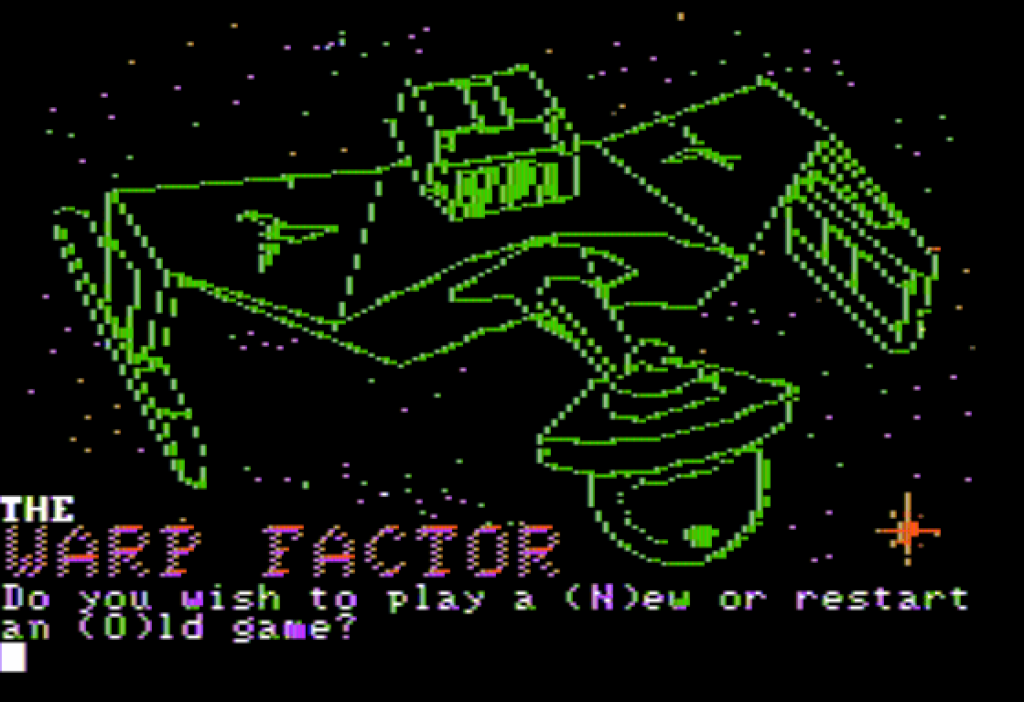
Well Lieutenant Narwhal. We have received your next assignment. Congratulations ! You will be transferred to no less than the prestigious USS Enterprise – NCC-1701. Lieutenant ! It is already waiting for you !
Thank you Sir ! I am very proud. Ready to be beamed up, then.

I never thought I would see that day ! Serving onboard the most famous starship in the Galaxy… It is strange though, I don’t recognize anything.
Welcome aboard the USS License Strike, Lieutenant Narwhal. I am sorry to say we have just updated the Warp Factor to 1.1 and, due to a cease and desist letter from CBS’s legal department, we’ve had to make a few slight changes to our ship !

WHAT ?
If it makes you feel any better, the Kling… I mean the Klargons are also still figuring their new ships out !
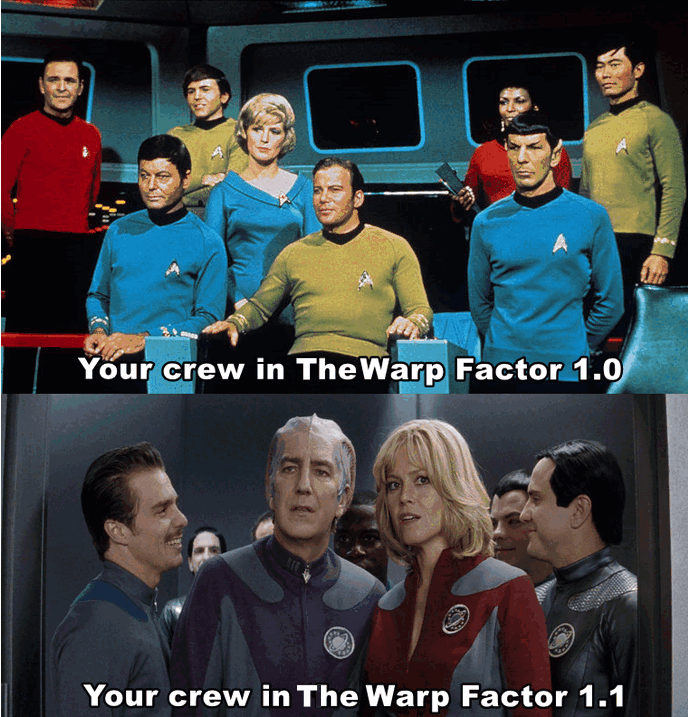
The Warp Factor is the first SSI foray into games that are neither about sports nor about military history. The game was designed and developed by Bruce D. Clayton and Paul Murray. While Clayton is not credited to any other video game, Murray continued to have a very productive career as he would contribute (initially mostly as designer, as time went on mostly as programmer) to more than 20 titles, going from grognardesque historical simulations to AD&D Golden Box games.
Like so many earlier SSI games, the Warp Factor is inspired by a tabletop game : Star Fleet Battles by Task Forces games. I say “inspired”, but I should probably say “ripped off” : the ruleset, the ships, the vocabulary (including the”Warp Factor“) come straight from Star Fleet Battles. Of course, SSI did not ask authorization from anyone, and they found themselves sued by Task Forces Games. This was settled out of court. The details of the settlement are not known, but it’s apparent that in the 1.1 version of the game all the Star Trek inspired ships were not Star Treky anymore, but rather boxy and in my opinion rather ugly.
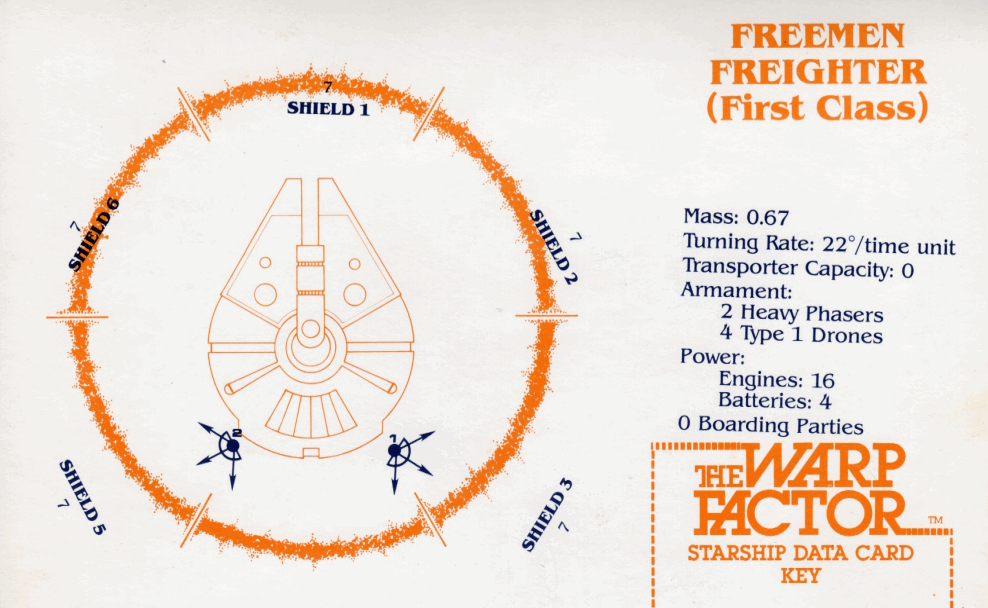
The 1.1 edition also made the game faster and corrected some mistakes in the ship reference cards.
As with many SSI games, the player has to create their own scenario. I decided that the USS License Strike would fight two Kling…. Klargon cruisers : the Gorm and the Crang.
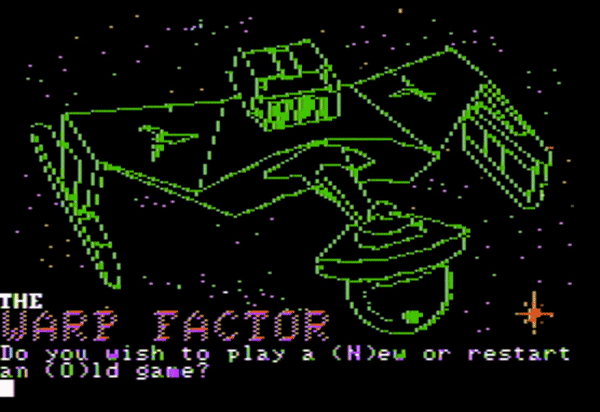
A Klargon Cruiser is barely weaker than an alliance dreadnought despite the latter being “first-class” and the former being “second-class” :
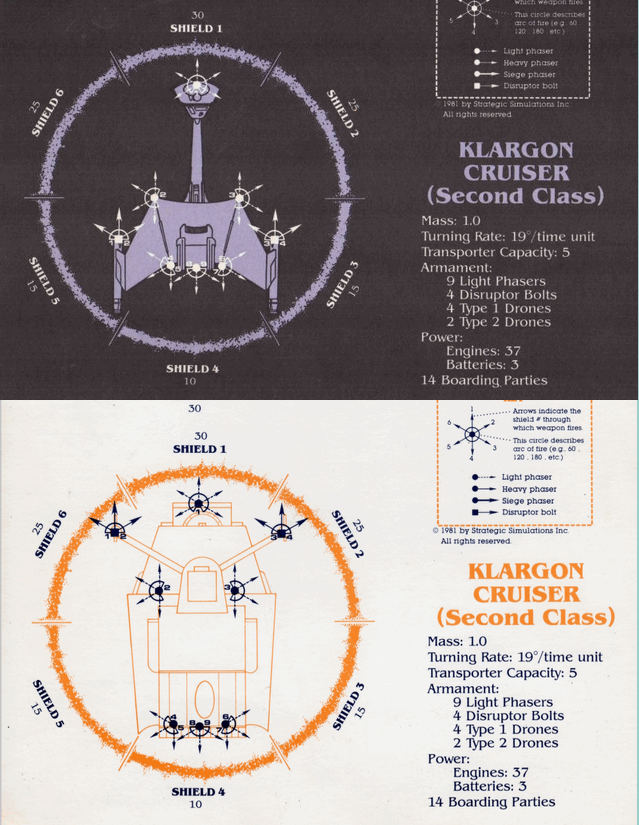
The Klargon cruisers are just as well-armored as my ship on the front, though their rear armor is lackluster. They have the same number of phasers as my ship, though much less powerful ones. My photon torpedoes are replaced by their (in my opinion way better) disruptor bolts, and on top of this the cruisers have long range missiles (“drones”) that I lack.
The two forces start at roughly 40 megaklicks (Mk) from one another, my force in the bottom left, the enemy force in the top right.

Overall, the game works a bit like Invasion Orion with more options. Every turn you get a certain volume of energy that you allocate to :
- weapons,
- shield,
- engine,
- ECM,
- anti-ECM,
- transporters (to beam soldiers on enemy ships),
- for some ships (not present in this battle) cloaking device,
- the leftover is allocated to the batteries for usage in a future turn.
I am heading slowly toward the Klargons. Slowly, because I need to charge my weapons, in particular my photon torpedoes (they take two full turns to charge), and because I need to keep my front shield boosted. In Warp Factor, a damaged shield never recovers but you can reinforce it for one turn at the cost of energy. You can reinforce a specific shield (in which case 1 energy = 1 damage absorbed) or all-around (2 energy = 1 damage absorbed).

Phasers have a range of 40 Mk, but shooting them alone and from that far away is a waste of energy. My photon torpedoes have a range of 20 Mk with a “normal” charge, whereas the Klargon disruptor bolts have a theoretical range of 25 Mk, but in reality a much shorter efficient range (ca 10 Mk) as the damage they cause goes down rapidly with range. My plan is to veer left at roughly 20 Mk, send my torpedoes, shoot with all my phasers and pass well away from disruptor efficient range.
Sadly, photon torpedoes while powerful at all ranges are not so accurate at this distance, and this happens during turn resolution :
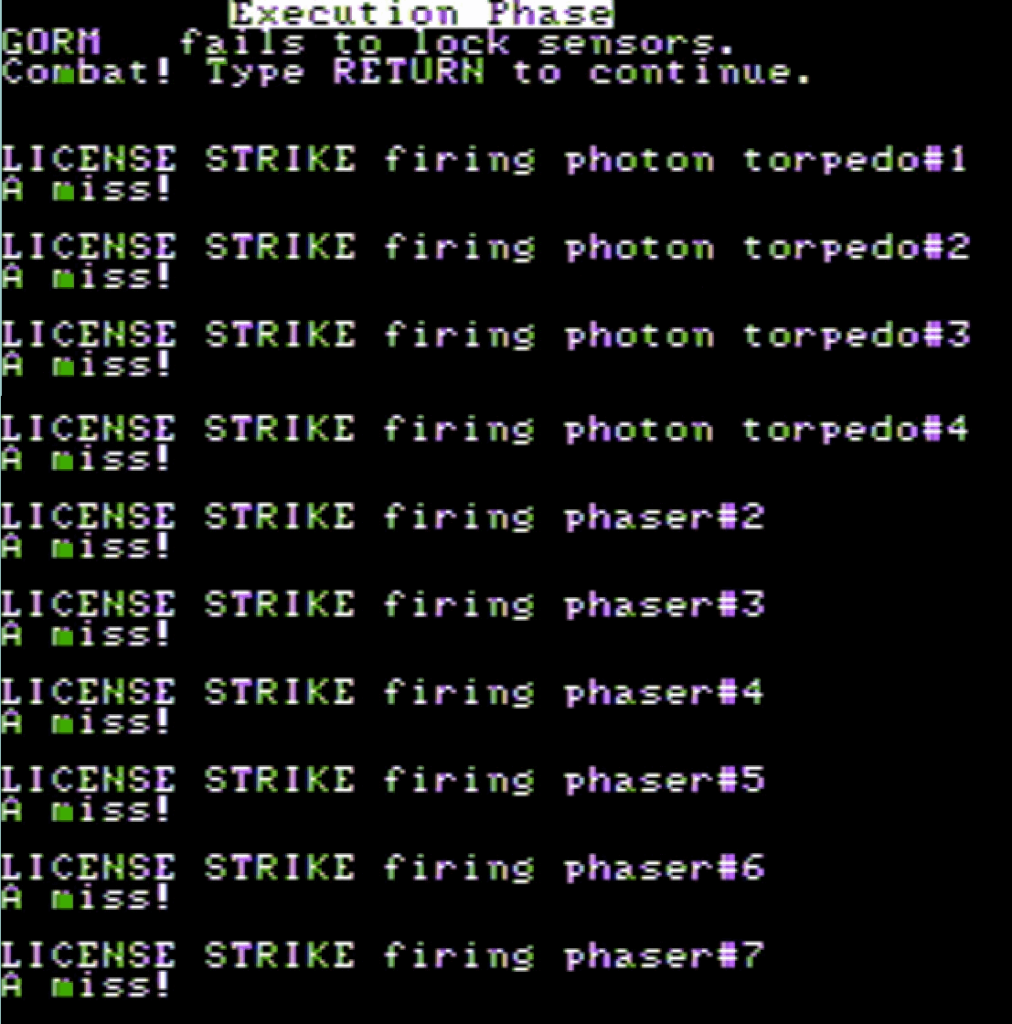
The following turn, the Klargons launch drones.

Drones are actually homing missiles :
- Type 1 Drones are anti-fighters, they are relatively weak, go at 15Mk by turn and last 2 turns (including the turn they were launched).
- Type 2 Drones are anti-capital ships, they are painful, go at 10 Mk by turn and last 4 turns.
Unlike other weapons, drones are limited in number. Once you have launched them all, you have to do without them.
The AI always send its type 1 drones first, so I have two fast missiles behind me.
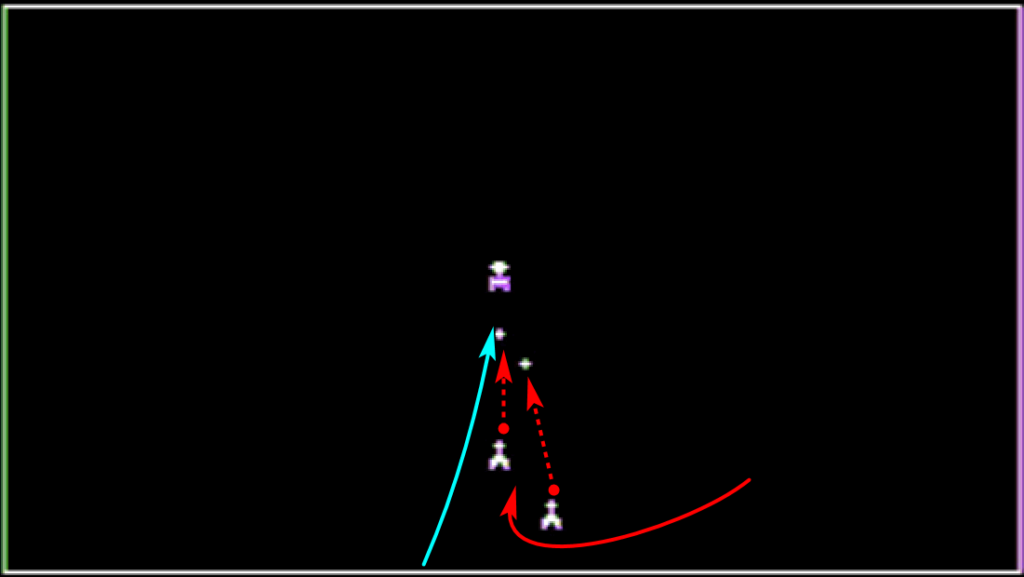
I allocate all my energy to my engine and the rear shield – this allows me to reach 18 Mk by turn and outrun the missiles, including a second batch sent one turn later.
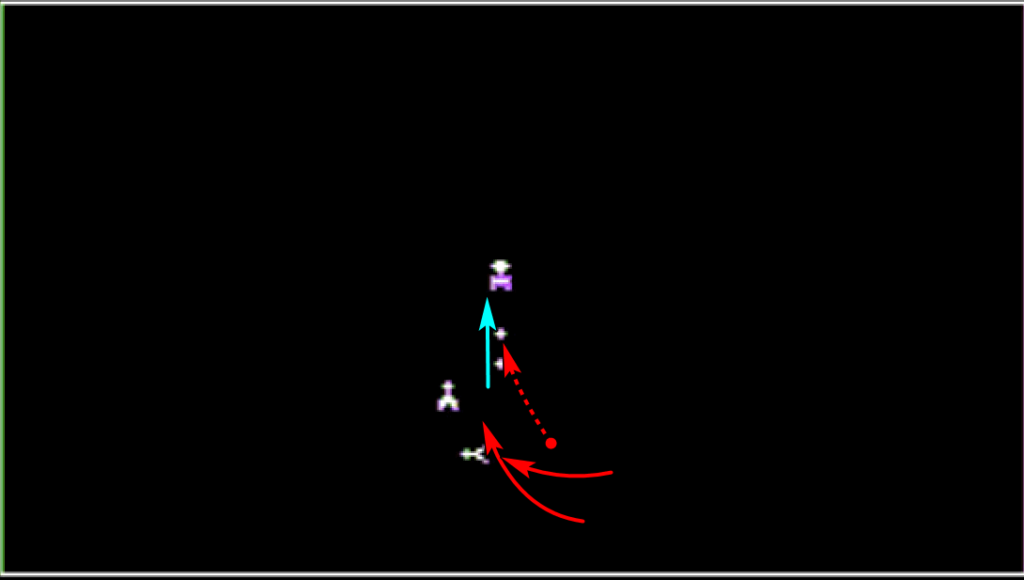
Long turn so I have some time to reload and refill my battery and I am back :
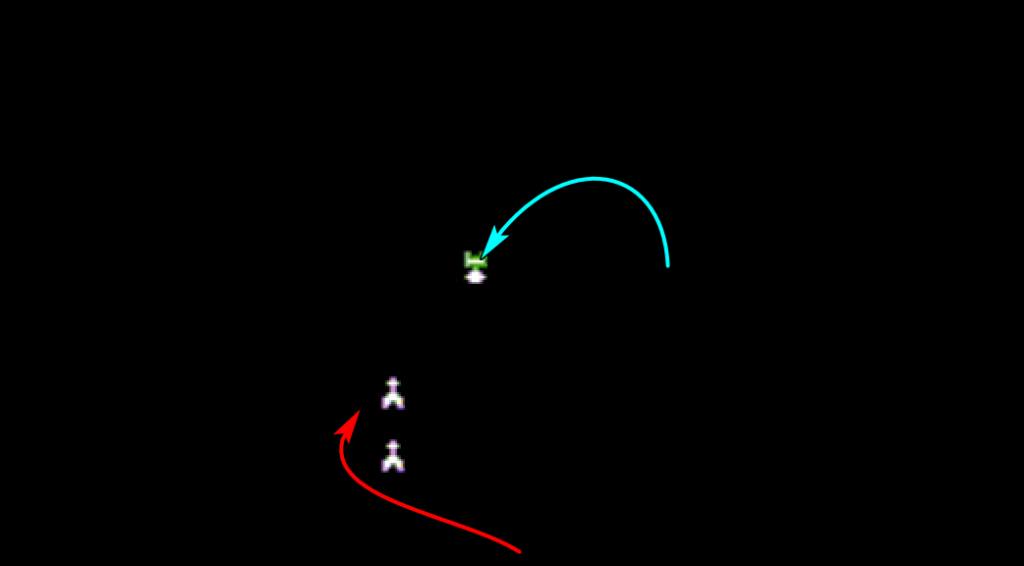
… but not much more lucky. I made a mistake with my orders and no torpedo is sent, my phasers miss, and I have drones behind me again.
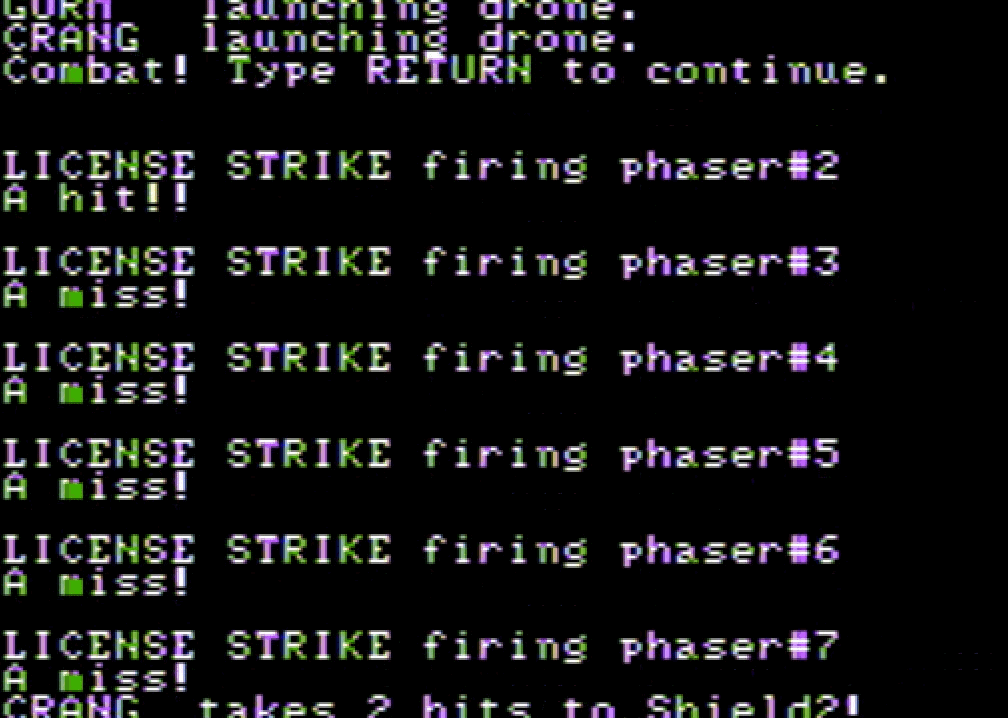
They are easy to outpace, and soon I am going for another run :
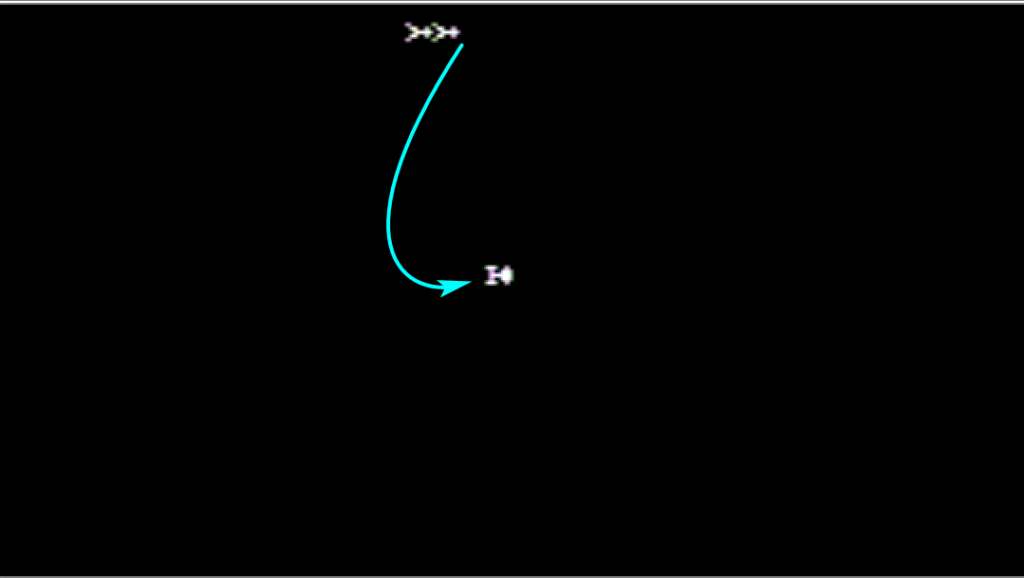

Annddd… those are the last drones, type 2 this time. Easily avoided. The Klargons shot 12 drones for no effect.
It is time to check the status of my ship before I get a bit more serious about attacking :
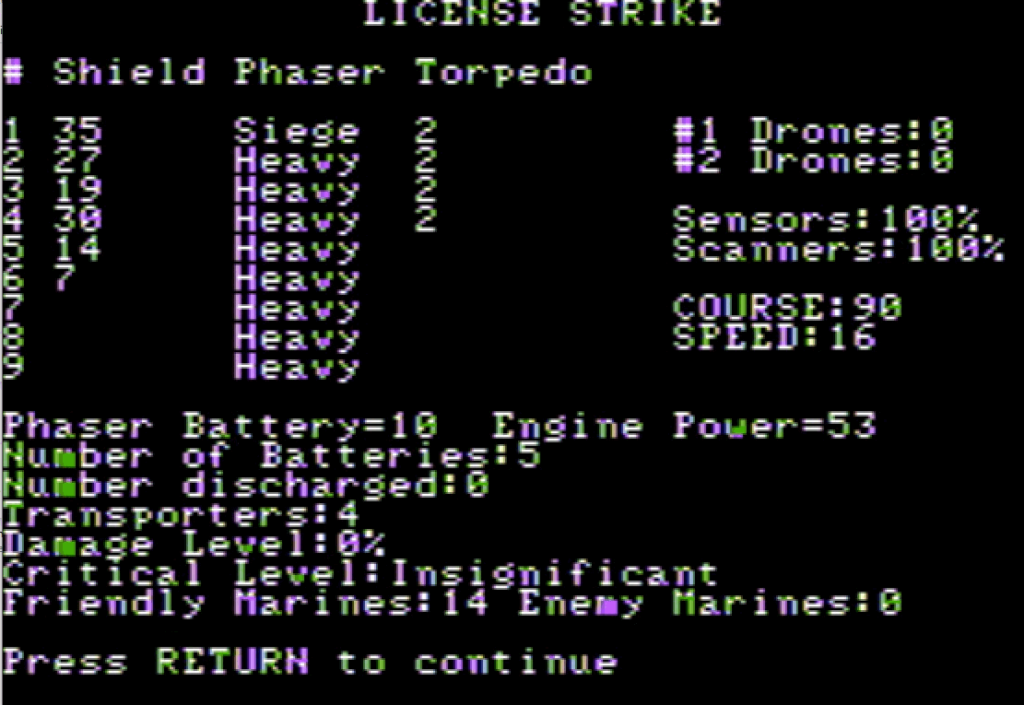
I received some damage on my side shields, especially left, but the general status is good. Well, it is time to pass at a distance where my photon torpedoes don’t miss, but not THAT close that their disruptor bolts destroy me. Another long circle, and I am back

Well, it looks like I misjudged a bit and I am going to pass VERY close. At very close range, I can overcharge my photon torpedoes. Overcharged torpedoes see their range drastically reduced (8 Mk, and at that range they are not even accurate) but if they hit, whatever they hit is in trouble.
And then I shoot :
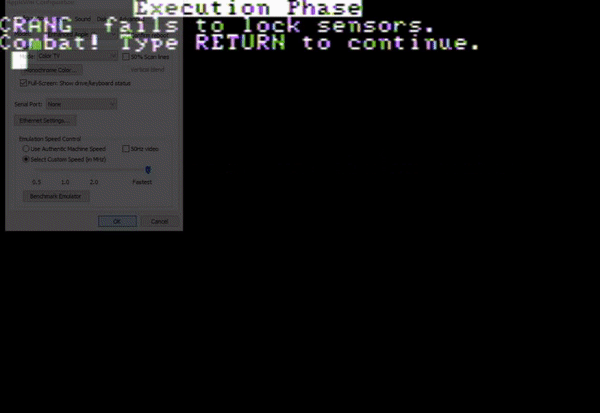
The Crang is hit for 51 damage. Its shield #2 is blown up, and the excess damage is allocated to the ship itself. My rear phasers (#8 and #9) shoot a bit later in the turn, also through where shield #2 was, and inflict 9 additional damage. Great.
Alllssso. I forgot to mention that the disruptor bolts can also be overcharged :

At this range, the Gorm and the Crang‘s disruptor bolts rip my side apart. My shield #3 is annihilated and I receive a lot of excess damage :
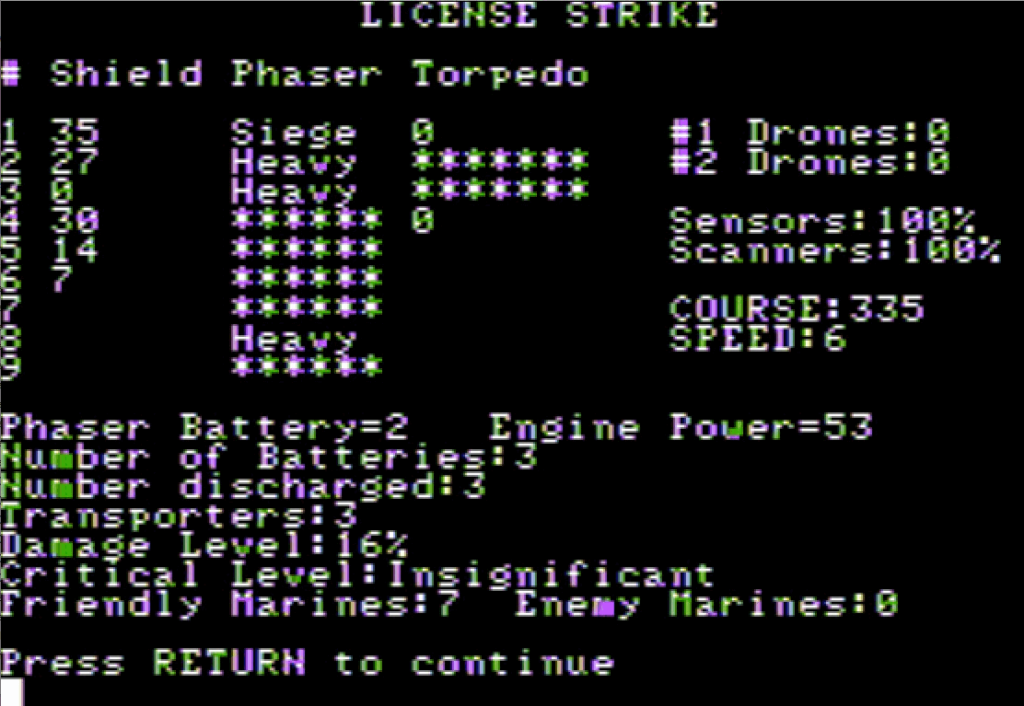
I lost more than half my firepower : I am down to two photon torpedo launchers, 3 phasers in the front and one in the back. my turreted 360° phasers are gone forever. In addition to this, as shield #3 is destroyed, I cannot boost it anymore – all damage coming from that direction will go through. At least I still have all my engines.
It took me a few turns to realize it, but the Crang is pretty much disabled at this point. Its engine is almost dead and its remaining firepower marginal. That leaves my badly damaged ship against the Krom.
The Krom is chasing me :

The situation could be a bit worse. The Krom is on my left, where my shield still works. I also have a surprise for the Klargons :

I suddenly allocate almost no energy to my engine – there is no inertia in this game so my ship immediately slows down a lot. The Klargon cruiser overshoots me and as it turns to face me I can shoot point blank at its side.

The Klargon disruptors can only shoot in the front 90° of the ship, so the only riposte I receive is from some light phasers, nothing my shields cannot absorb. The Krom is not quite as crippled as the Crang, but it is damaged and importantly has no more protection from its shield #3.
Some more movement ensues. The cruiser turns sharper than my dreadnought (I can do 180° a turn and it does 300° a turn) but as I slow down more while turning I managed to flank it again with my overloaded photon torpedoes :

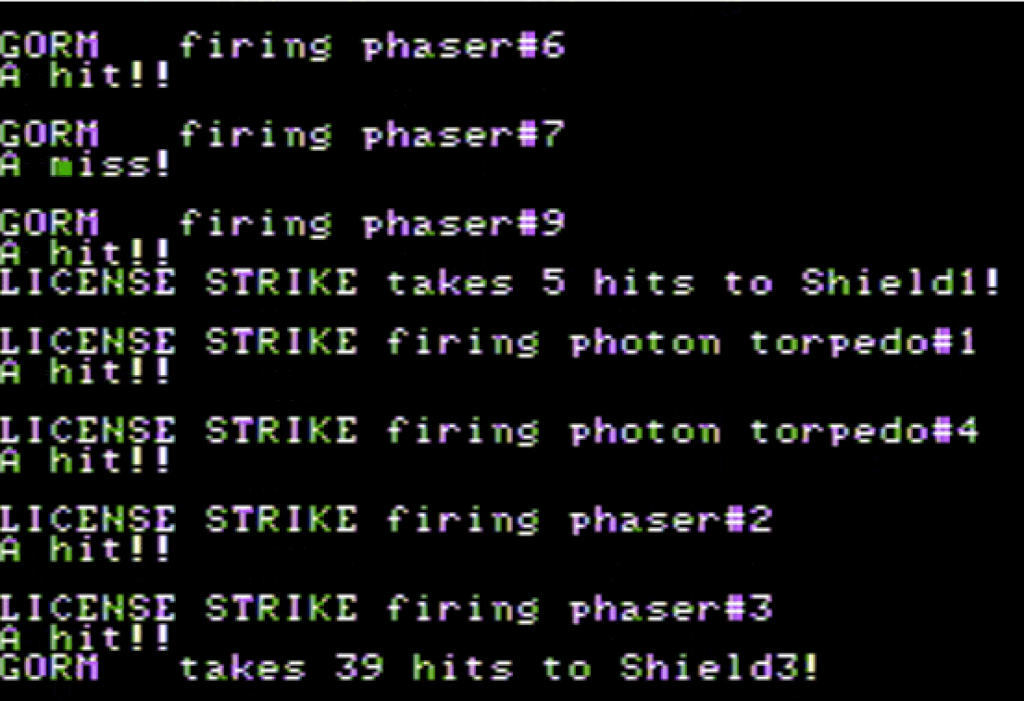
39 more damage through an unprotected side ? That’s devastating.
It is time to prepare for the final pass. I do a large circle, making sure to keep my destroyed shield #3 facing outside (and away from the Klargons), and I position myself for the coup-de-grâce :

The Crang goes down first. There is not any subtlety to this, I had noticed that it only had one disruptor left so I did not fear a frontal pass :
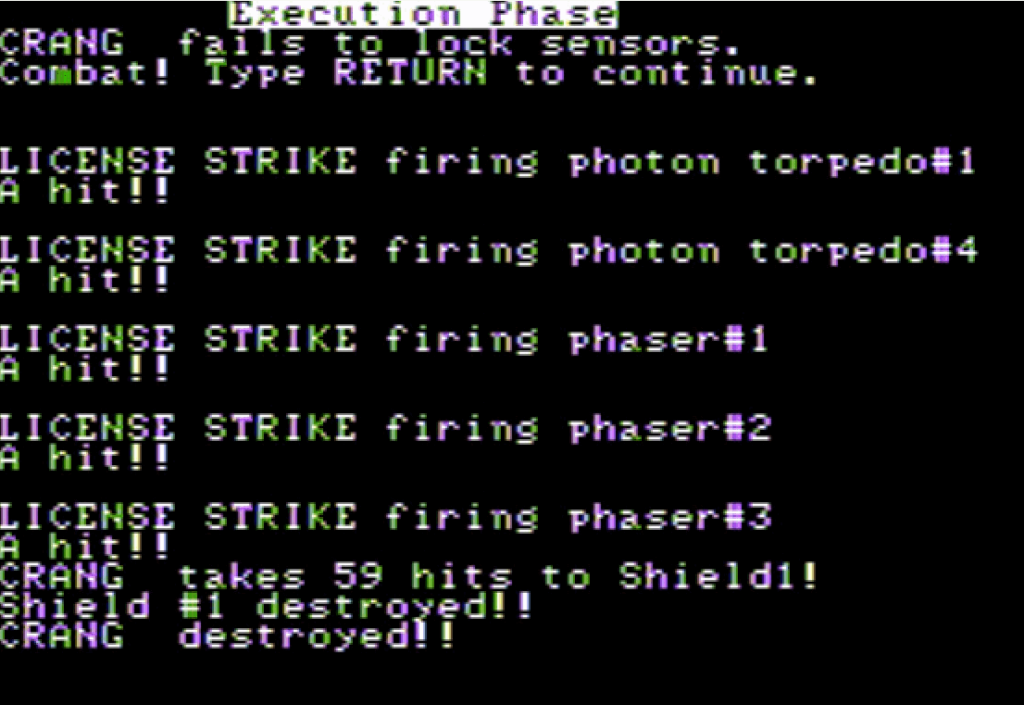
One turn later, it’s Krom‘s turn to be finished off :
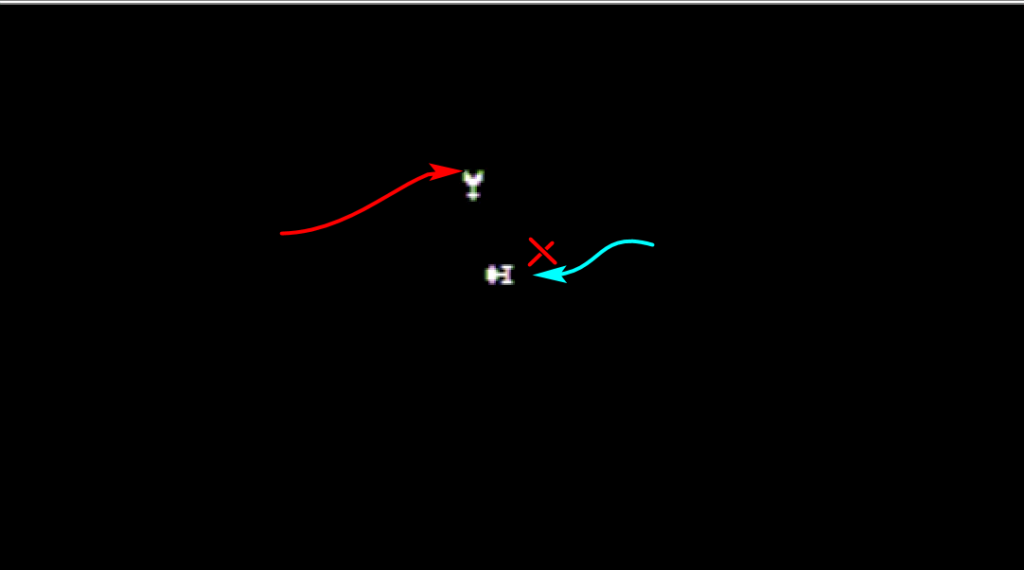
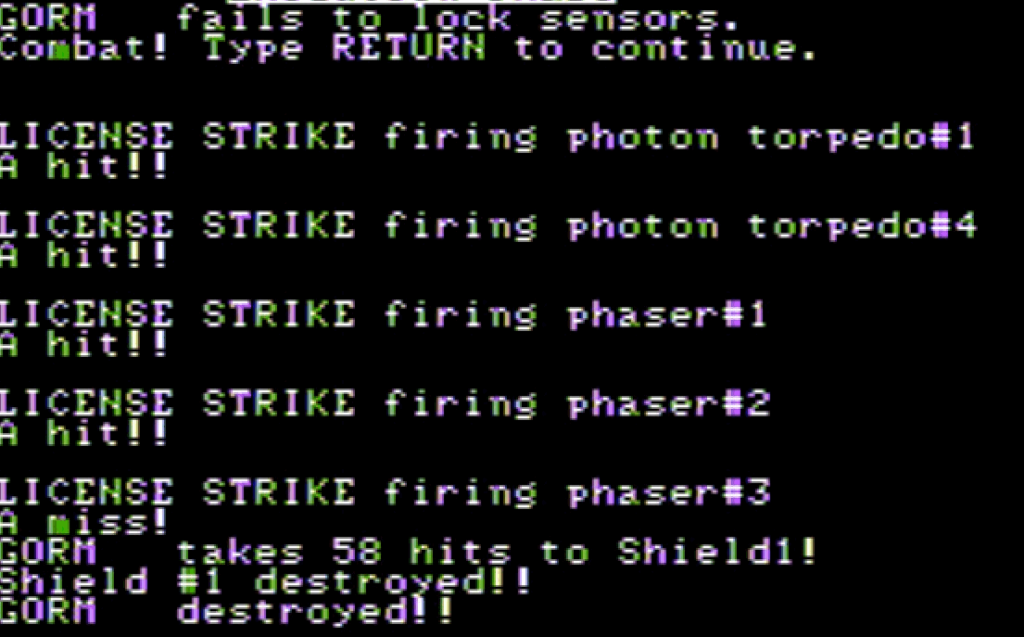
And voilà, once again, the Federation, sorry, the Alliance triumphs over the Klint… Klaat… Klargons !

Final status of my ship :

Full disclosure : I cut a lot of fruitless maneuvers and aborted attack passes at the Klargons to keep my story shorter. The game is really the kind of “advanced version of Invasion Orion” I was looking for, but sadly it comes with a bunch of issues I will describe in the review.